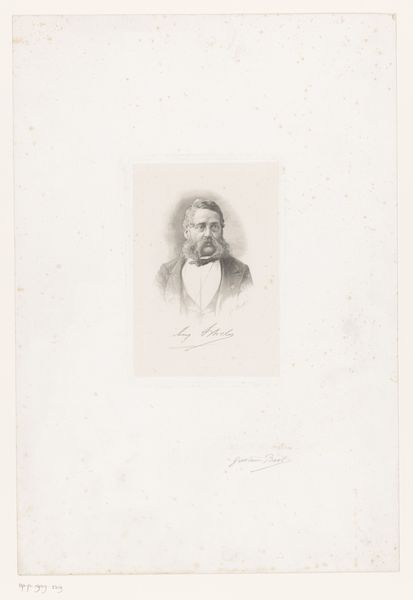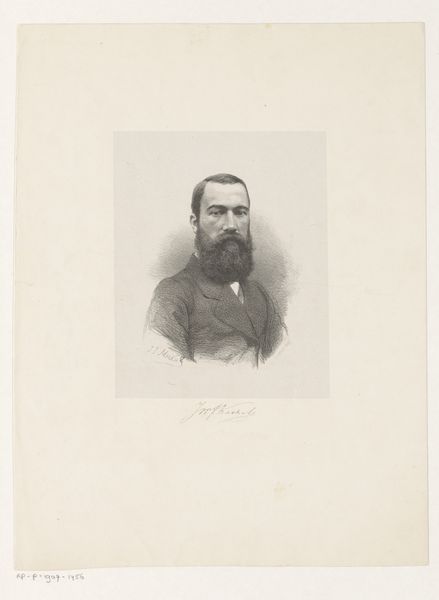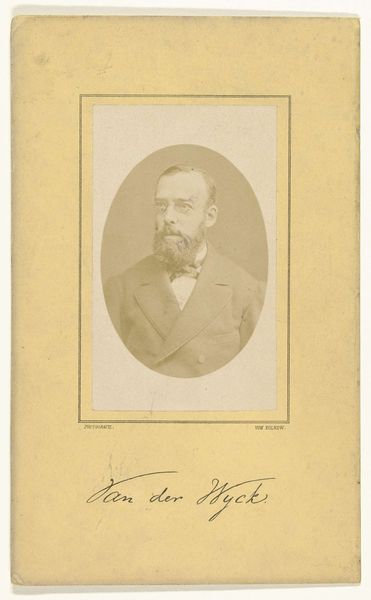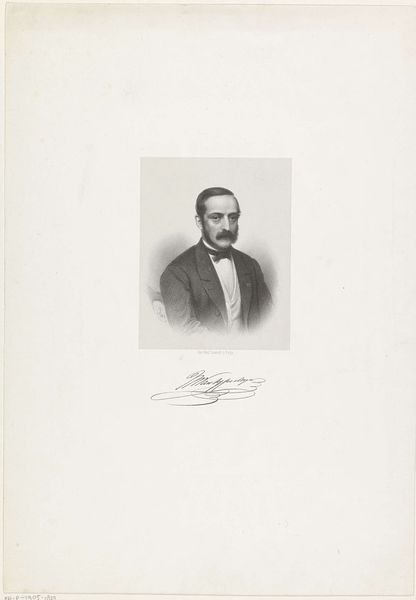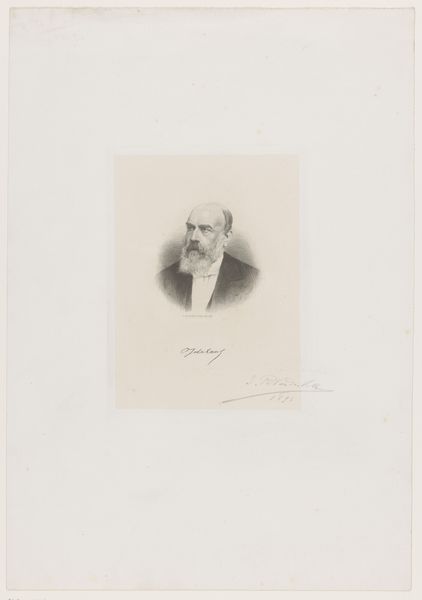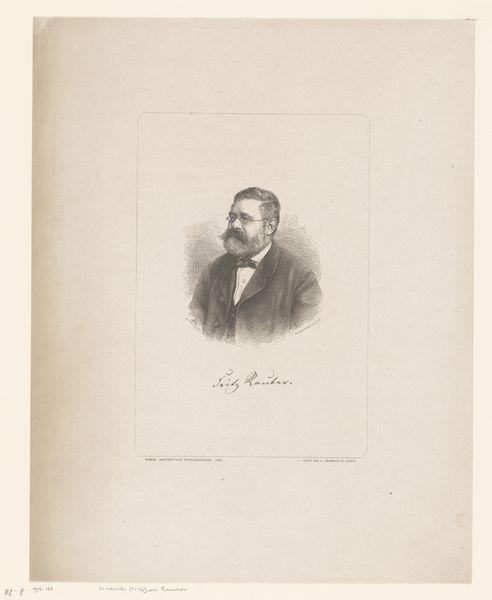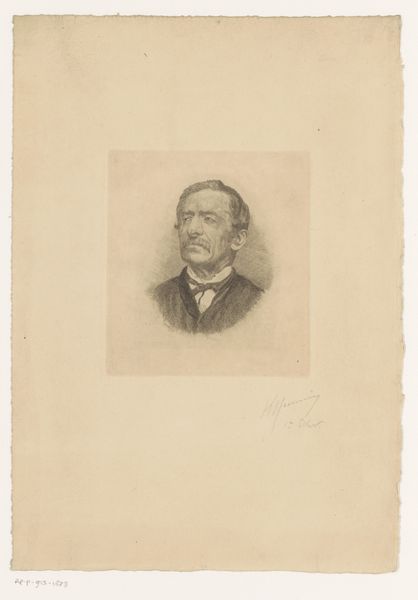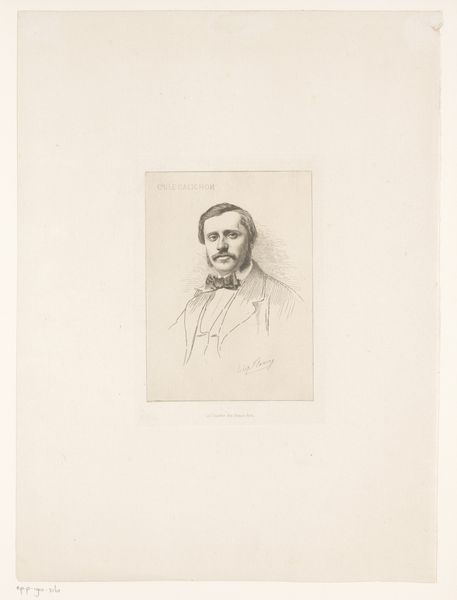
drawing, pencil
#
portrait
#
pencil drawn
#
drawing
#
pencil sketch
#
pencil drawing
#
pencil
#
pencil work
#
genre-painting
#
academic-art
#
realism
Dimensions: height 138 mm, width 111 mm
Copyright: Rijks Museum: Open Domain
Editor: So, here we have "Portret van L. Mathot" by Willem Philip van der Veken, created in 1895, using pencil on paper. It's a pretty standard portrait, but the detail captured with just pencil is striking. How do you interpret this work, especially within the context of its time? Curator: What I immediately consider is the role of portraiture within the burgeoning middle class of the late 19th century. Photography was becoming more accessible, but a drawn portrait still carried a certain prestige and artistic value. What does the formal attire of L. Mathot communicate to us? Editor: I suppose it speaks to a certain status or aspiration to that status. It seems like an attempt to portray the subject in a dignified manner. Curator: Exactly! The act of commissioning such a portrait can be seen as a performance of identity, aligning oneself with established notions of respectability and success. Who were the typical patrons of the artist during this period, and how might their social standing have influenced van der Veken's artistic choices? Consider how the Realist style adopted enhances that sense of serious individuality. Editor: That makes sense. I hadn’t really thought about the social implications of commissioning art like this at the time. It really shifts my understanding of the piece. Curator: It moves it from a simple likeness to a document of social history. Each line, each shadow contributes to constructing a desired image within a specific socio-political landscape. So, do you view this as a fairly objective depiction, or does van der Veken inject his own views? Editor: I think I lean more towards thinking it shows the conventions of that era. I guess that’s less about the individual artist, more about collective attitudes of the time. Curator: Precisely! Examining art this way opens so many avenues for inquiry and deeper understandings. Editor: Thanks, I have a better understanding of portraiture within a broader context now.
Comments
No comments
Be the first to comment and join the conversation on the ultimate creative platform.


